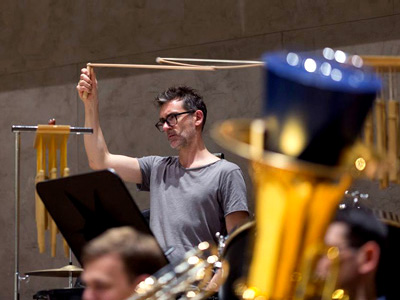
By ANDREW POWELL
Published: July 29, 2017
MUNICH — Not every week does the Bavarian Radio Symphony Orchestra devote a whole program to music written since 2000. Guest conductor Matthias Pintscher’s concert July 7 in the Herkulessaal proved an exception. It began spatially, extravagantly, with his own fantasy With Lilies White (2002); progressed to a nuanced new Mark Andre work in need of an edit; and concluded, feebly it must be said, with pieces by György Kurtág and Jonathan Harvey. Along the way, the orchestra’s precision, enthusiasm, and seemingly instinctive care with color and balances brought rewards. The 20-minute fantasy, written for Cleveland and scored for orchestra with voices, sets wholly unrelated texts by Edward Paston and Derek Jarman, makes chitchat in soft percussive would-be quadrophony, and fuses stylistic gestures of the Renaissance and Baroque. If it never quite makes its point, it at least achieves handsome self-sufficiency. Vinzenz Löffel, soloist of the Augsburger Domsingknaben, and sopranos Sarah Aristidou, Anna-Maria Palii and Sheva Tehoval etched the vocal lines with varying degrees of steadiness at probably too much volume. The longer, BRSO-commissioned whence … whither (2016) charts the touch and direction of a barely audible wind, an element of Christian faith for Andre, né Marc André. Strings and percussion of a large orchestra used with remarkable restraint trace sound-shadows that are broken up by abrupt or gradual, hard or soft, events to yield an intriguing sense of physical movement, crucially free of horror-movie cliché. Even the whirling bows, or Schwirrbögen, fit in snugly. The first four of Andre’s seven movements, called “sections,” present a balance of ideas and might well have made a complete work — the third rises loudly, as it were violently, at its close; the fourth hints at resolution — but the composer pushes on, stirred by the spiritual number seven, alas with duller material until a lively yet in context less innovative final section. Kurtág conveys nothing so much as desolation in his seven-minute Petite musique solennelle (2015), a harmonically cautious exercise in sour chord-clusters. Clangor at the midpoint comprises one statement of a permeating four-note figure. Brooding horns, soft trumpet lines of some grace, and reticent percussive utterances go precisely nowhere. Harvey’s … towards a Pure Land (2005) places a string group “peacefully behind the sound” of the main orchestra, endowed with innumerable percussion instruments, and proceeds to describe in sixteen minutes an active but chronically pallid arc whose center of “insubstantial pitch” is, as in the Kurtág, and in the composer’s words, “an emptiness.” There, presumably, lies the Pure Land, “a state of mind beyond suffering … revealing the meaning of Dharma,” not in the surrounding music, with its fluid, ungraspable ideas. Pintscher and BR’s players nimbly negotiated all exercises.
Photo © Bayerischer Rundfunk
Related posts:
Time for Schwetzingen
Bieito Hijacks Boris
Thielemann’s Rosenkavalier
Zimerman Plays Munich
Stravinsky On Autopilot
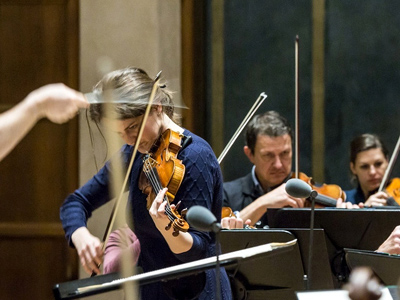
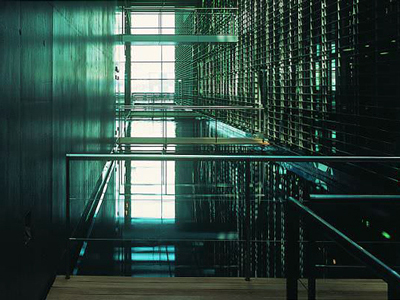
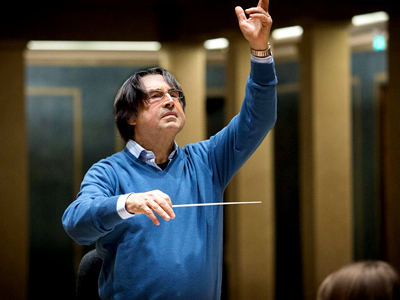
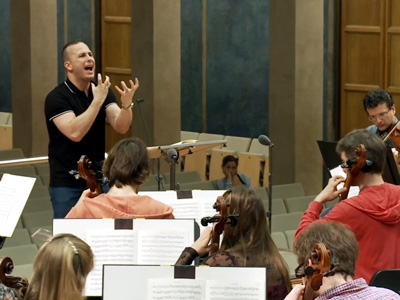
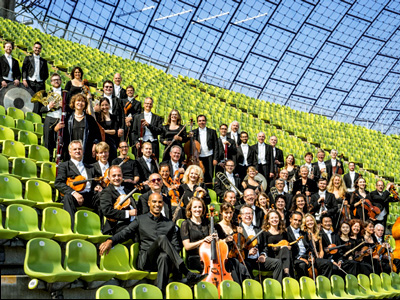
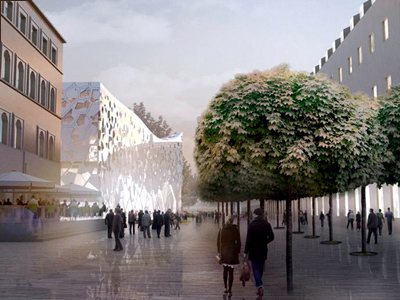
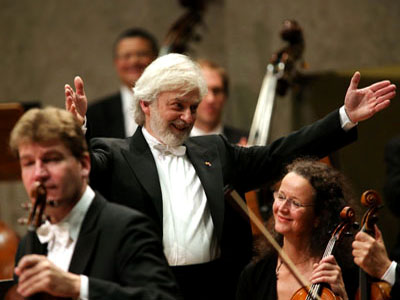
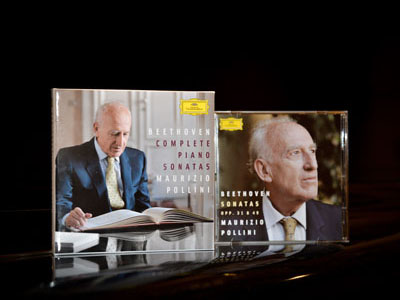
Concert Hall Design Chosen
Friday, October 27th, 2017By ANDREW POWELL
Published: October 27, 2017
MUNICH — Though it will be built on the wrong side of the wrong train station, Munich’s much-debated, much-delayed new concert hall crept toward reality today with the announcement of a winning design. Bregenz-based Cukrowicz Nachbaur Architekten secured first place in the competition for the venue, now dubbed “Münchner Konzerthaus” (instead of “Konzertsaal München” or “Neues Odeon”), said Bavaria’s Interior Ministry. A 25-person jury reviewed thirty-odd designs yesterday and this morning at the Hochschule für Musik und Theater before reaching its decision. Details will be given tomorrow at a news conference; seating capacity may be stated as 1,800 with project cost at €300 million.
All being well, which is saying a lot in this city on this subject, a bulbous glassy prism with its top planed off will as early as 2019 start to rise just east of Munich East train station on blighted land long home to a Knödel factory. In it symphonic music will be played to audiences larger than at the Herkulessaal and with better acoustics than at the Gasteig, Munich’s two problematic existing halls. The Bavarian Radio Symphony Orchestra will for the first time in its seven-decade history have a home.
But things going smoothly won’t change the location. Questions that have been asked since the site was announced two years ago — out of the blue, in a political about-face after it seemed the whole new-hall idea had been killed by Bürgermeister Dieter Reiter and Bavaria’s Minister-Präsident Horst Seehofer, and following twenty years of consideration of some half-dozen other sites — are stark and tinged with disbelief that a prime location was not feasible. Will people want to travel outside Munich’s historic core for art music? Will concertgoers coming into town from the suburbs want to change trains at Munich Central Station, ride five stops to Munich East, another hub, and then walk 200 meters further east? One would think not. The very benefit of siting the new hall in this drab place, that it could be built expeditiously, may limit its success.
Illustrations © Hans-Joachim Wuthenow
Related posts:
MPhil Bosses Want Continuity
New Hall for Munich?
Chung to Conduct for Trump
Nézet-Séguin: Hit, Miss
Bretz’s Dutchman, Alas Miked
Tags:Bavarian Radio Symphony Orchestra, Commentary, Cukrowicz Nachbaur Architekten, Dieter Reiter, Gasteig, Herkulessaal, Horst Seehofer, Konzertsaal München, München, Münchner Konzerthaus, Munich, Neues Odeon, News, Symphonie-Orchester des Bayerischen Rundfunks
Posted in Munich Times | Comments Closed